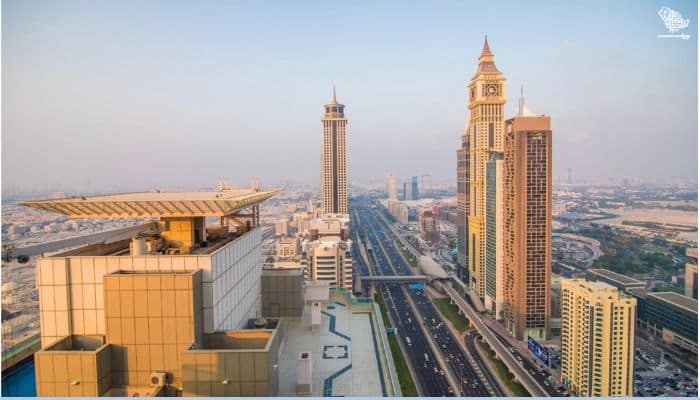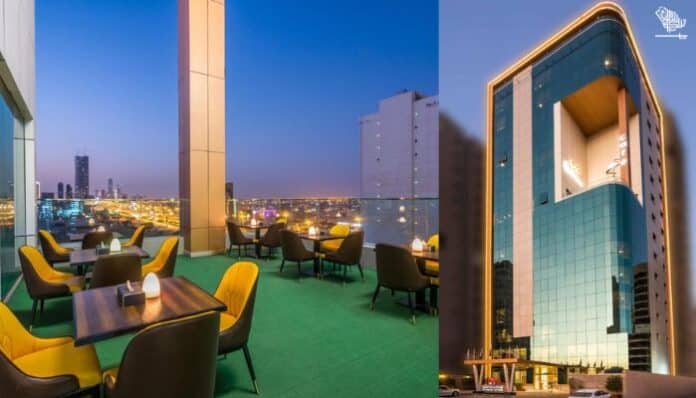The real estate markets in both the United Arab Emirates (UAE) and Saudi Arabia have seen tremendous growth over the past decade. The UAE, with its rising metropolitan hubs of Dubai and Abu Dhabi, has established itself as a premier global destination, attracting expatriates and investors from around the world. Saudi Arabia is also witnessing rapid development, especially in major cities like Riyadh and Jeddah, driven by government initiatives such as Vision 2030.
The increasing populations and economic expansion in the UAE and Saudi Arabia have fueled strong demand for residential properties. Developers in both countries have responded by undertaking massive projects offering apartments, villas, townhouses, and luxury homes. As these real estate markets evolve, potential buyers and renters have more choices than ever. Choosing between the UAE and Saudi Arabia depends on budget, lifestyle needs, employment opportunities, and investment goals.
Apartment Affordability: A Big Price Difference
When it comes to apartment affordability, there is a noticeable difference between the UAE and Saudi Arabia. In major UAE cities like Dubai and Abu Dhabi, rental and purchase prices for apartments are significantly higher than in major Saudi cities such as Riyadh and Jeddah.
According to Bayut, in a central location like Business Bay, prices for renting a studio in Dubai start at SAR 53,000 per year. This is over 2 times more expensive than renting a comparable studio in Jeddah’s city center, starting at SAR 23,000 yearly. Let’s look at the buying and renting prices in these cities according to Feb 2024 stats from Numbeo:
| Dubai, UAE | Abu Dhabi, UAE | Riyadh, SA | Jeddah, SA | |
|---|---|---|---|---|
| Apartment Buying Price in City Centre (per sq mt) | SAR 18,630 | SAR 19,071 | SAR 7,738 | SAR 6,774 |
| Apartment Buying Price Outside of Centre (per sq mt) | SAR 11,153 | SAR 17,164 | SAR 4,853 | SAR 4,789 |
| 1 BHK Rent in City Centre | SAR 8,067 | SAR 6,212 | SAR 4,793 | SAR 1,934 |
| 1 BHK Rent Outside of Centre | SAR 4,946 | SAR 4,094 | SAR 3,335 | SAR 1,390 |
Saudi Arabia’s lower prices stem from lower construction costs, more available land, and less demand than the UAE currently. However, Saudi’s real estate market rapidly expands as demand rises, with new prime projects. Saudi provides affordable housing, though the UAE offers more premium, diverse communities.
Rental Yields: Which Offers Stronger Returns?
When seeking the best real estate investment opportunities, rental yield is a crucial metric to analyze. Let’s examine how rental yields might compare investment options in Saudi Arabia and the UAE according to Numbeo’s Feb 2024 stats.
| Dubai, UAE | Abu Dhabi, UAE | Riyadh, SA | Jeddah, SA | |
|---|---|---|---|---|
| Gross Rental Yield (City Centre) | 9.85% | 7.85% | 12.91% | 6.21% |
| Gross Rental Yield (Outside of Centre) | 10.70% | 5.82% | 13.19% | 6.30% |
Saudi Arabia: Riyadh and Jeddah offer higher initial gross rental yields. This could be attributed to factors like strong demand for rental properties and, in some cases, relatively more affordable property prices outside city centers.
UAE: Dubai and Abu Dhabi are major investment hubs with varying yields. Areas outside the central districts often provide better gross rental yield potential, while prime city-center properties might have lower yields but could offer greater capital appreciation over time.
Type of Residential Properties in UAE
Here’s a breakdown of the different types of properties you can find in the UAE:
- Apartments: The most common property type, ranging from small studios to expansive penthouses. Popular in cities like Dubai and Abu Dhabi.
- Villas: Detached or semi-detached houses, often found in gated communities. Offer more space and privacy than apartments.
- Townhouses: Multi-story houses sharing walls with neighbors, a middle ground between villas and apartments.
- Off-plan Properties: Projects under development that are purchased before completion. It can be riskier but potentially offer better prices.
Type of Residential Properties in Saudi Arabia
- Villas: Popular choice, especially for families. Range from traditional designs to luxurious modern villas within compounds.
- Apartments: Increasingly common, especially in urban centers and new developments. It can be more affordable than villas.
- Compounds: Gated communities offering villas, apartments, and shared amenities. Popular with expatriates in cities like Riyadh.
- Traditional Houses: Older properties in historic areas may appeal to those interested in restoration projects.
- Emerging Options: Saudi Arabia’s megaprojects are introducing innovative housing concepts, such as futuristic designs, in NEOM.
Ownership Regulations & Government Initiatives
UAE Ownership Regulations
- Freehold Zones: Designated areas where foreigners can purchase properties with full ownership rights. Prime areas in Dubai, Abu Dhabi, and other emirates are freehold.
- Leasehold: In certain areas, properties may be available on a long-term lease (usually 99 years).
- Golden Visa: Substantial real estate investments can qualify investors for residency visas (5-year or 10-year options).
UAE Government Initiatives
- Pro-Business Environment: Streamlined regulations, ease of setting up businesses, and incentives for foreign investors create a favorable climate for real estate investment.
- Real Estate Regulatory Agency (RERA): Established in Dubai to regulate the real estate sector, protecting buyers’ and sellers’ interests.
- Off-Plan Regulations: Laws safeguard investors purchasing off-plan properties, such as the requirement for developers to hold funds in escrow accounts.
- Affordable Housing Programs: While less common than luxury developments, some initiatives exist to provide more affordable housing options.
Saudi Arabia Ownership Regulations
- Evolving Regulations: Saudi Arabia’s real estate market is undergoing significant changes, and recent reforms are gradually opening up the market to foreign investors.
- Freehold Ownership: Specific zones and large-scale development projects offer freehold ownership options for foreign investors.
Saudi Arabia Government Initiatives
- Long-term Residency: Programs like the Premium Residency scheme link residency permits to substantial property investments. It is available to owners of real estate worth at least SAR 4 million (residency duration linked to ownership).
- Indirect Benefits: Vision 2030 and programs like “Sakani” focus on increasing homeownership for Saudi citizens, but these initiatives could indirectly create opportunities for foreign investors as the real estate market develops.
Conclusion
The UAE real estate market offers more stability and higher yields but is becoming saturated. Saudi Arabia’s market is growing rapidly and appeals to long-term investors, though the UAE currently remains more favorable. Ultimately, professional advice reflecting current conditions is key for investors considering either market.
FAQs
- What are the main differences in property investment between the UAE and Saudi Arabia?
The UAE market is more mature, with higher rental yields and better protection policies. Saudi Arabia is a rapidly growing market with significant long-term potential.
- How risky is real estate investment in the UAE versus Saudi Arabia?
The UAE is considered less risky due to its established market, diversification, and legal framework. Saudi Arabia’s market is perceived as riskier but improving as regulations evolve.




